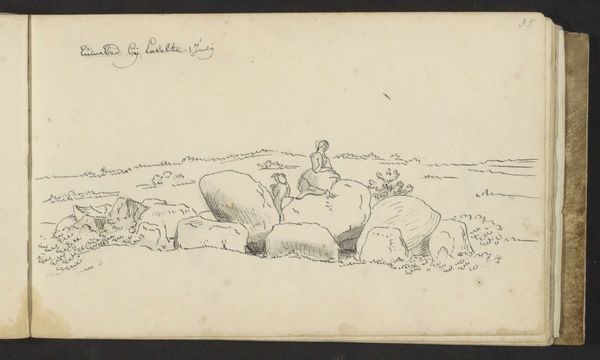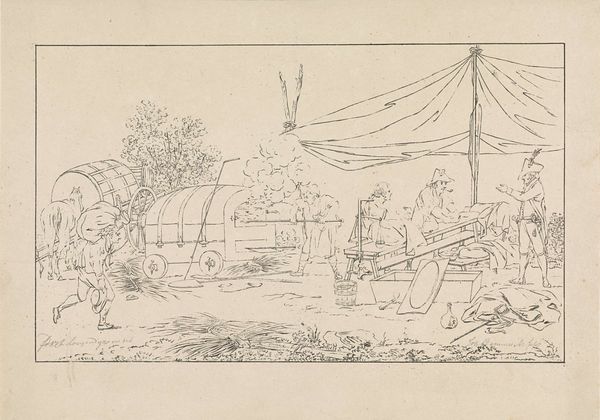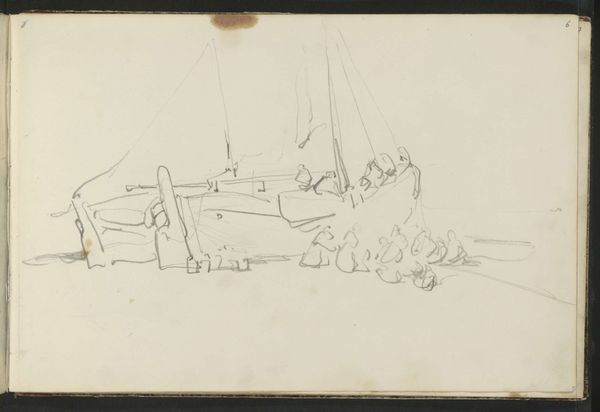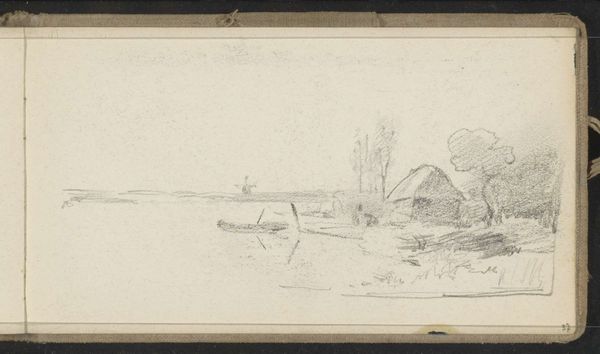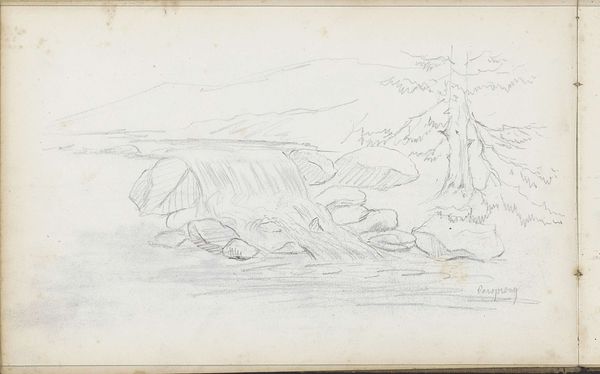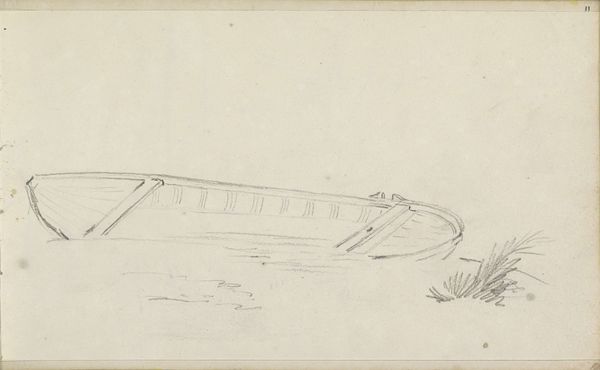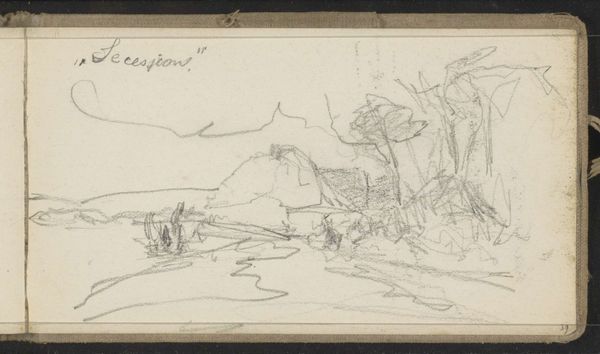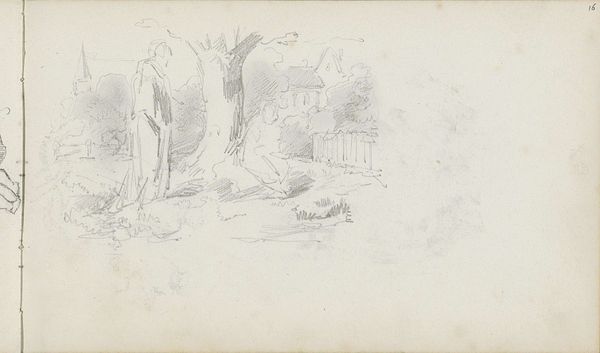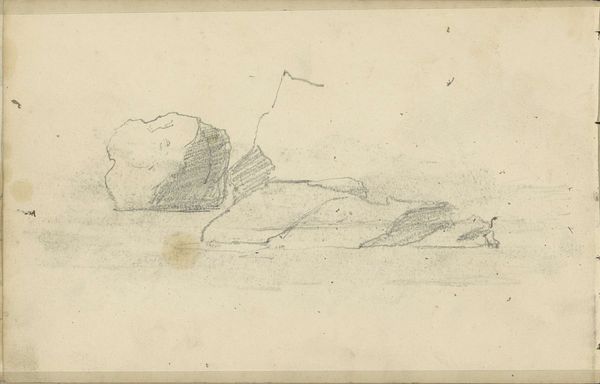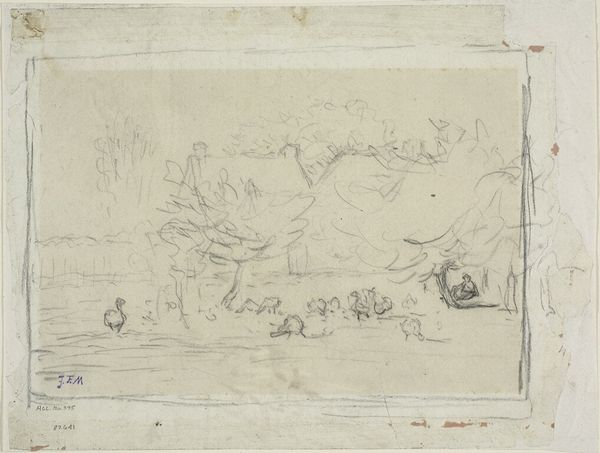
drawing, paper, ink
#
drawing
#
baroque
#
pen sketch
#
sketch book
#
hand drawn type
#
landscape
#
paper
#
personal sketchbook
#
ink
#
sketchwork
#
pen-ink sketch
#
pen work
#
sketchbook drawing
#
genre-painting
#
storyboard and sketchbook work
#
sketchbook art
Copyright: Rijks Museum: Open Domain
Editor: Here we have Abraham de Haen the Second’s “Man en vrouw bij een hunebed bij Havelte,” possibly from the 1730s. It’s an ink drawing on paper, a quick sketch, really. I'm struck by how these massive stones dwarf the figures. What story do you think it's telling? Curator: That's a great starting point. I think the scale is key. This drawing, on one level, depicts an encounter with the past, doesn't it? We see these figures confronting a megalithic monument. Consider what these stones *meant* in the 18th century. They weren't simply geological formations, but tangible links to prehistory. And, what of the act of sketching itself at this time? Editor: Like a form of cultural tourism, maybe? Documenting history. Curator: Precisely. And I'd suggest that this relates directly to emerging ideas of nationalism and identity formation. How do you think these monumental remnants of a distant past could inform contemporary views on society and heritage? Are we seeing the past being appropriated, reshaped to serve a narrative? Editor: So, it's not just a simple landscape. It’s about how people connect—or are made to connect—to their perceived origins, and how artists participated in that process. Fascinating. Curator: Indeed. And this links directly into dialogues around heritage and representation. It highlights how notions of the past were constructed and utilized, ideas still with us today. It’s made me reconsider who gets to write the history and how. Editor: I’m taking away the importance of questioning what seems like a simple depiction. This makes me want to look at other landscape drawings from that era!
Comments
No comments
Be the first to comment and join the conversation on the ultimate creative platform.
